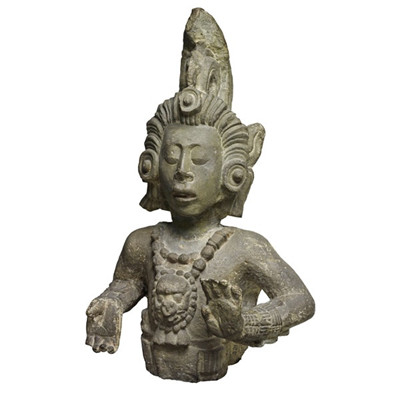This is sound of worship coming from a Christian Church in Chiapas, the southernmost state of Mexico,where the local Indian population are offering their god, not just their devotion, but also their food-it's a practice they've been following for thousands of years.
墨西哥最南端的恰帕斯州当地一间基督教堂传来了祷告的声音。这其实是当地的印第安人在向他们的神供奉他们的虔诚与食物。向神灵供奉食物这种做法对他们而言已经有数千年历史了。
Nowadays we like to say we are what we eat, but for generations among the faithful, it's been equally true to say we worship what we eat.
如今我们流行说“吃什么,像什么。”对于这些祖祖辈辈忠诚于了自身这种虔诚的人们,这说法应该改成“吃什么,崇拜什么。”
This willingness to venerate the food on our plate seems to arrive at a particular moment in human development-and it tells us much more about a society than its favourite supper dish.
这种崇拜我们盘中餐的意愿,似乎是在人类发展史上的某个特定时刻降临的,而且它向我们讲叙关于这个社会的故事,远远超过了一个民族晚餐桌上最得意的一盘佳肴。
It's always present in one way or another-either to be eaten, or to be looked at, or to be worshipped. It is part of the cultural identity.'
“它的存在是永恒的,形式是多样的,要么是食物,要么是欣赏物,要么是崇拜的偶像。它是文化认同的一部分。”
A history of the world.
世界历史,
In a hundred objects.
百件藏品,
Maya maize God,a stone statue discovered in Honduras,approximately 1,300 years old.
距今约一千三百年前出土于洪都拉斯的玛雅玉米神灵石像。
Some archaeologists argue that food must always have had a divine role even for our earliest ancestors; just think of the cow goddess of Egypt, or Bacchus and Ceres of classical mythology, or Annapurna, the Hindu goddess of food. But there's a particular time, after the end of the Ice Age, so between ten and five thousand years ago roughly, when a range of new foods seems to be accompanied by a range of new gods.
一些考古学家认为食物对我们最早期的祖先而言始终扮演着神圣的角色,例如埃及的牛女神,欧洲古典神话中的酒神与谷神,印度教中的食物女神安纳普尔纳。然而人类历史上有一段特定时期,大概是冰河时代结束后的五千到一万年前之间,当一系列新兴食物出现时,伴随而来的似乎有一系列新造的神灵。













